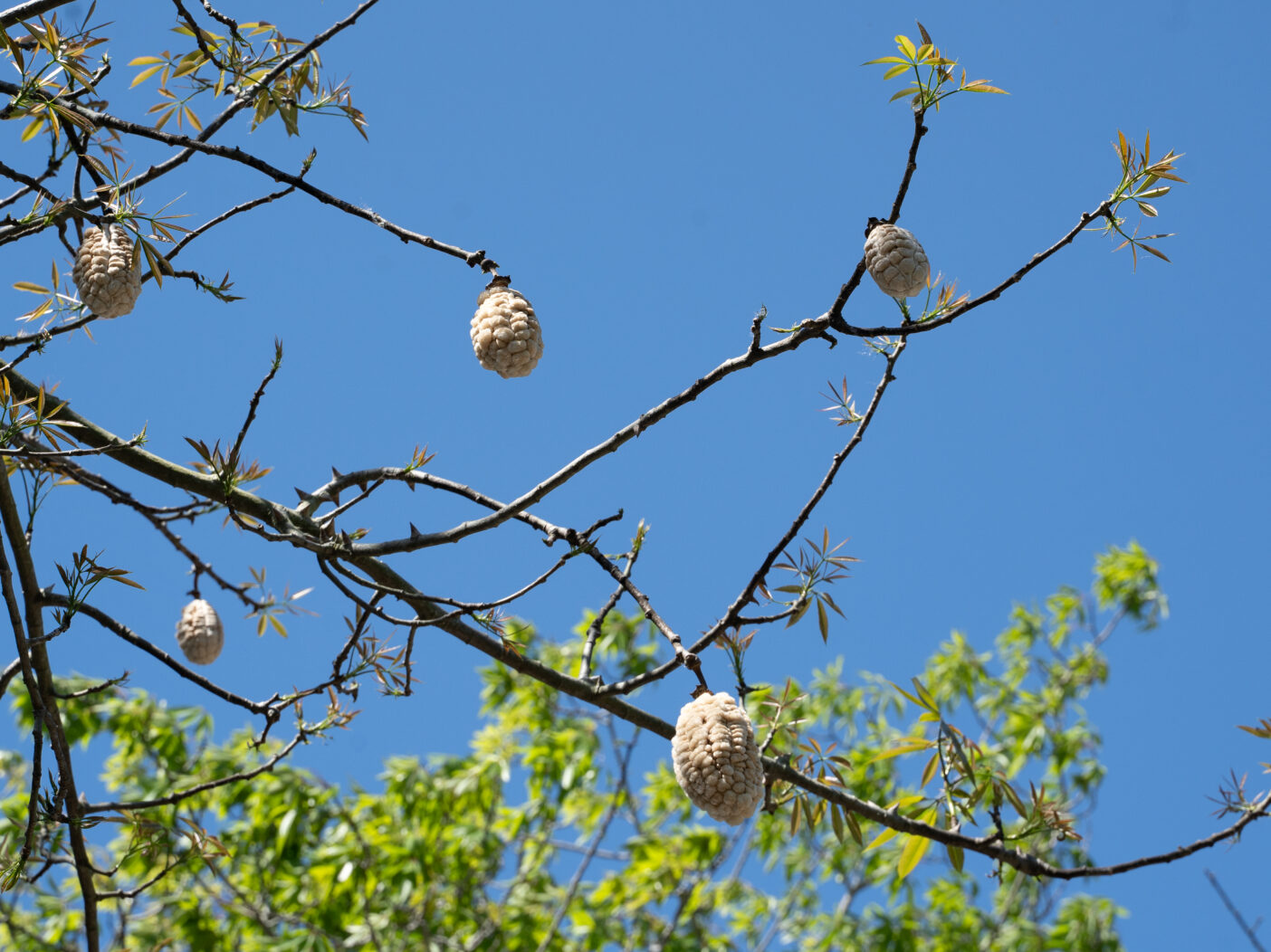
Are those cotton balls in the sky?
Look to the canopy of the Performance Lawn or Irma’s Garden and you may be wondering just that.
The fiber tufts clinging to tree branches and rolling across the landscape like fluffy tumbleweed are from Ceiba trees, commonly called “silk floss.” They’re one of the tropics’ most intriguing specimens.
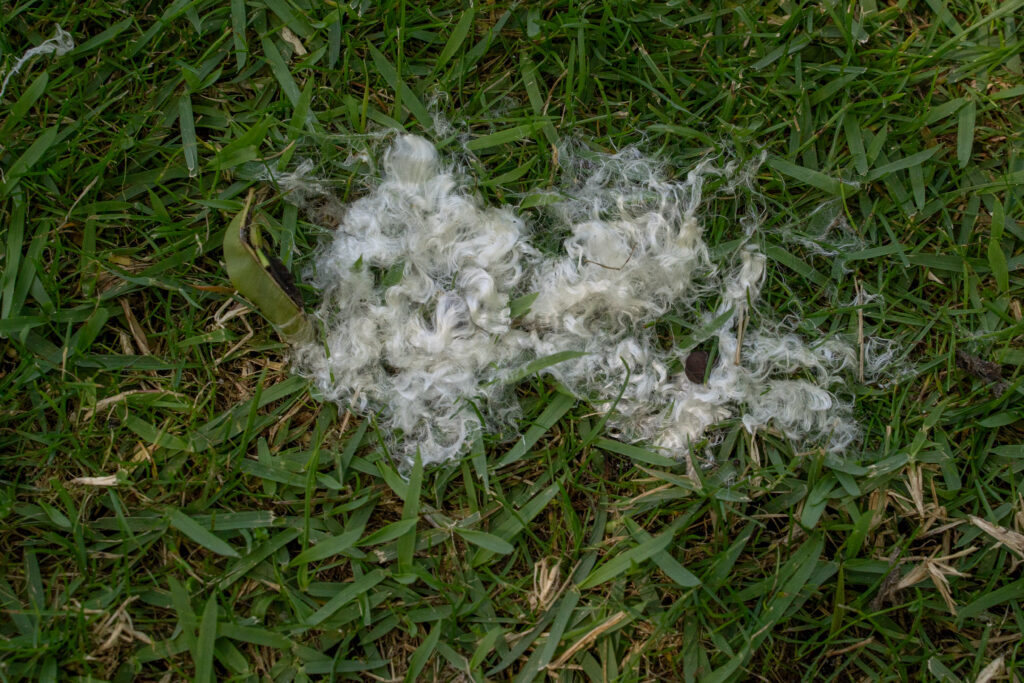
In fall, the Garden’s Ceiba collection illuminates the canopy in pink and white blooms. After flowering, the trees produce avocado-shaped seedpods in which the tightly packed, fluffy white fibers surround tiny black seeds. When the pods open, the cottony fiber carries the seeds on the wind. That’s what you’re seeing along the Performance Lawn and in Irma’s Garden now and what you’re likely to see in the coming weeks in the Kapnick Brazilian Garden, which features numerous Ceiba species and hybrids. Pods on those trees have not yet opened.
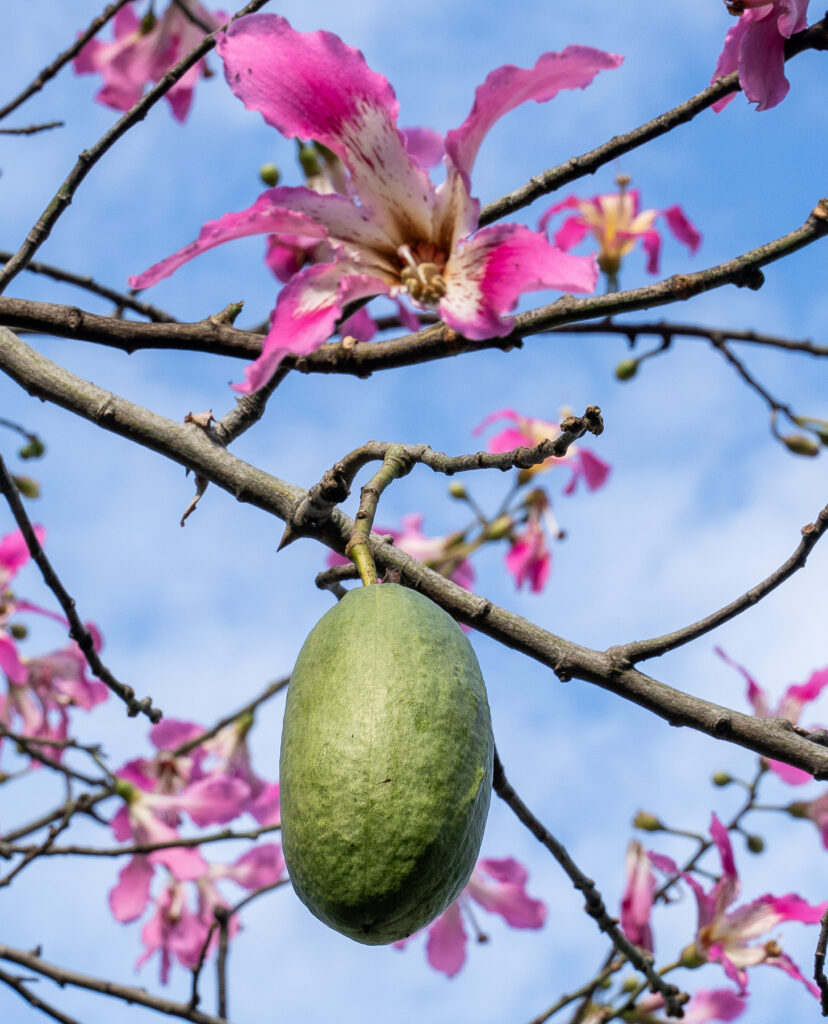
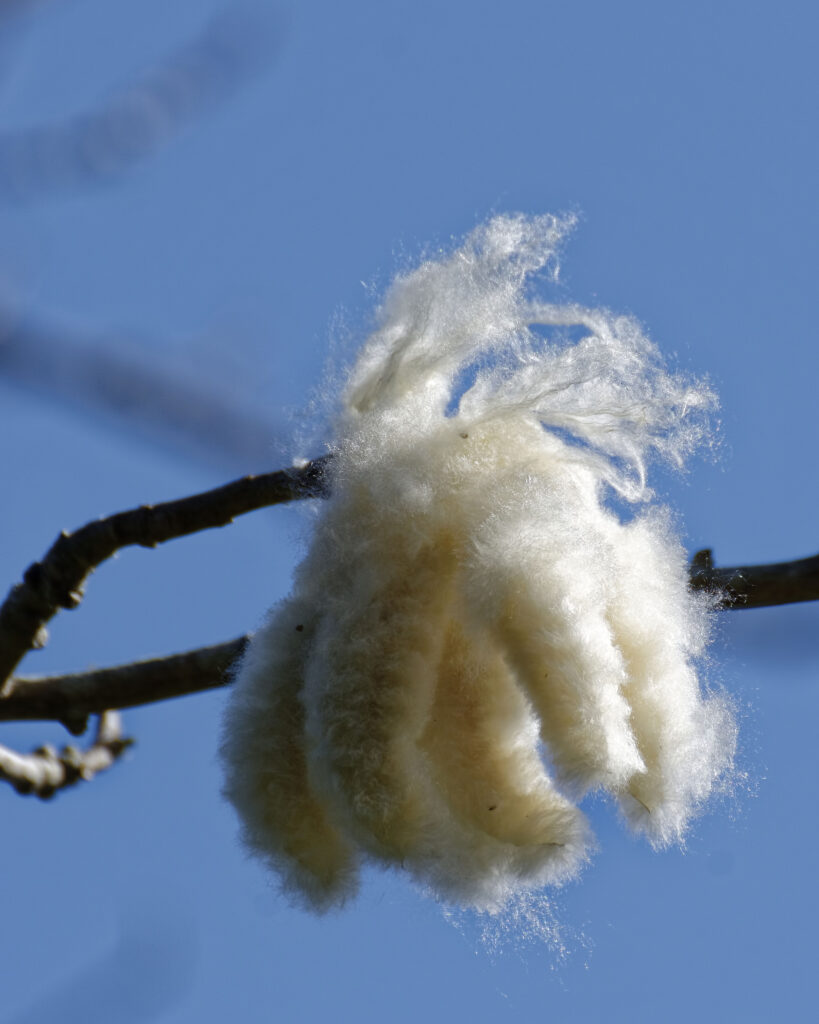
Water-resistant Ceiba fibers, particularly those from the kapok tree (C. pentandra), have been used in products ranging from upholstery to life jackets.
These trees, native to South America, also feature spiky trunks, deterring small mammals whose claws could damage their bark. This is a critical adaptation; Ceiba species shed their leaves during the dry season (that’s winter in Florida), and the bark takes over photosynthesis, the process of making sugar, to nourish itself.
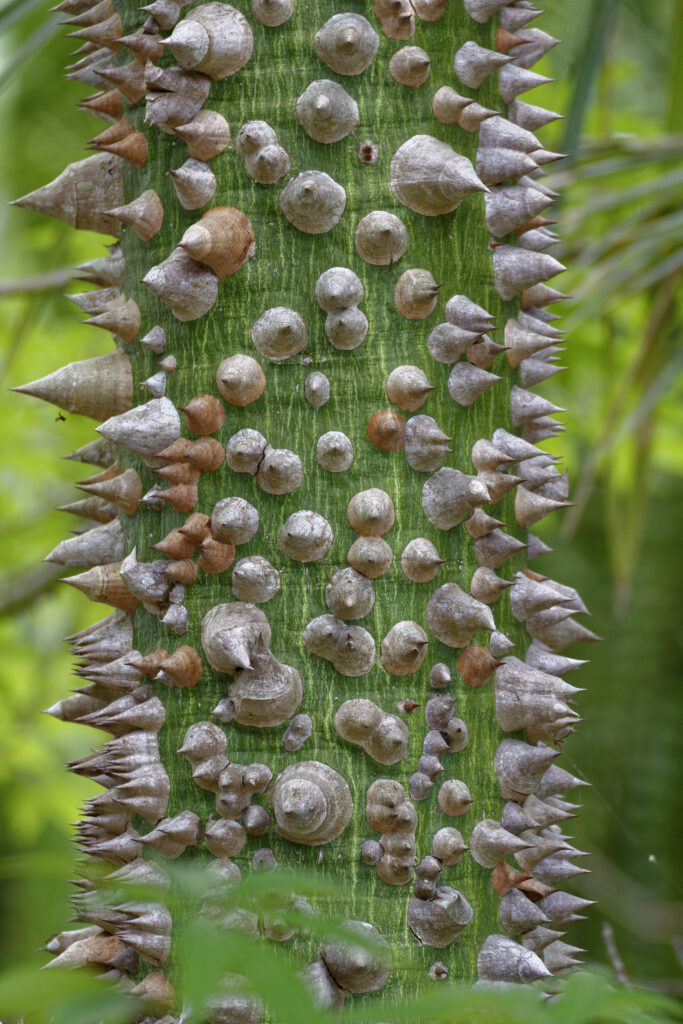
As you visit the Garden, look for “cotton balls” on the ground and in the canopy. Want to learn more? Check out this previous Notes from the Garden post celebrating our Ceiba collection.

About the Author
Jennifer Reed is the Garden’s Editorial Director and a longtime Southwest Florida journalist.


